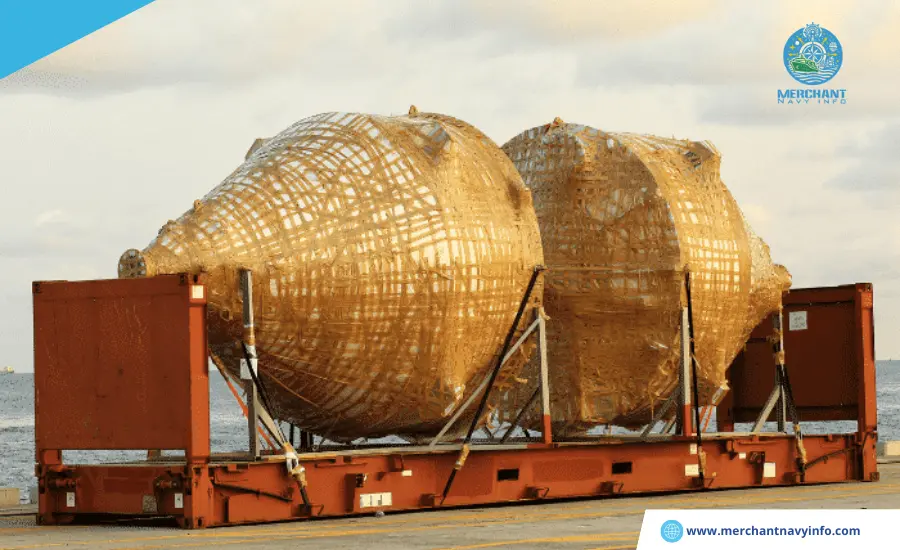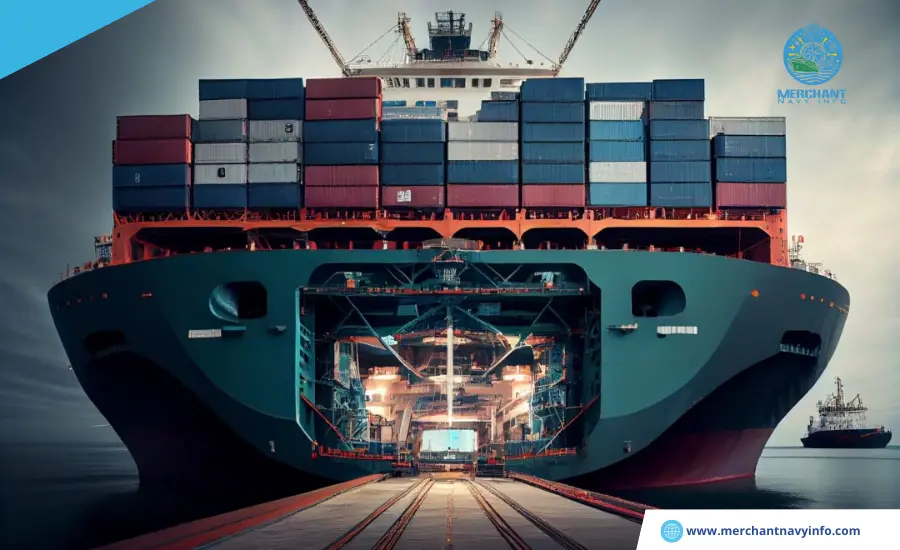
When cargo is very large or has awkward outriggers. Or protrusions that don’t fit into a standard shipping container, it’s called oversized cargo, or OOG container for short. The list of OOG container is long. Examples include very large automobiles, such as luxury buses, car trailers, aircraft parts, and wind turbine parts. Construction equipment, unusually large pieces of power generation machinery, etc. ). Exceed standard container dimensions and are too heavy to fit into rectangular shipping containers such as a 20-foot container (TEU) or a 40-foot container (FEU).
Costs of Shipping Excess Cargo
Shipping excess cargo can be costly because it incurs additional costs. Bulky loads take up space that could have been used for other loads. When OOG container is loaded on or below the deck of a cargo ship, other containers cannot be placed and secured in the adjacent side twist locks. Also, no containers can be placed on top of OOG container. Flat containers and platform containers. Hence, shipping and transport companies charge extra to compensate for this wasted space. Space wasted in this way is also known as “wasted space.”
OG Planning and Execution

If oversized loads are not properly secured or secured in the container, they can cause damage to other loads stored nearby. In addition, the location of oversized cargo on the ship must be carefully planned, as other cargo must be unloaded before the OOG container. Not only the ocean transportation of OOG containers but also the land transportation from the manufacturing facility or storage location to the loading port must be properly planned and executed.
Facilities
The most common option for transporting oversized cargo is the flat rack or open-top container. Flat rack containers typically have collapsible walls on both ends. The sides of the container are open and have no walls. Oversized cargo can be loaded into such containers from the side or from the top. A large forklift is usually used when loading from the side. When cargo is loaded from the top, it is done using a crane. Cargo is usually placed in the center of the container to ensure optimal weight distribution.
Unlike flat racks, open-top containers have solid walls along their length and a door at one end, just like conventional containers. However, they can be opened at the top, or the container can have a rigid removable roof. The rigid roof can be removed with a crane. Open-top containers have rigid walls on the sides, so they cannot be loaded from the side. Loading must, therefore, be done through the door with a large forklift or from above with a crane.
With some types of open-top containers, the beam above the door can be removed to make it easier to load cargo with large cargo spaces through the door. Some doors can be rotated outwards to allow heavy forklifts to easily enter the container. Once an oversized load is loaded, straps can secure it securely to the bottom of the container. The open top is then covered with a heavy-duty tarp, such as a tarp, or with the container’s roof.
Flat Rack Containers
Flat racks are typically available in 40 ft and 20 ft lengths. Oversized cargo can be loaded from the side using a large forklift or placed on the ground from above using a crane. They are, therefore, also suitable for cargo such as odd-shaped machinery, boats, long pipe structures, etc.
A typical 40 ft flat rack container has dimensions of mostly 40 ft x 8 ft x 8 ft 6 in (8 ft 6 in height). If a load is too long or wide to fit on a single flat rack, two or more flat racks can be connected together to hold the load. 20ft flat rack containers have dimensions of 20ft x 8ft x 8ft 6in (end wall height) and can carry a payload of approximately 22 tonnes. Flat rack containers have the advantage of having empty space. Flat racks can be stacked on the top of each other to save space.
Open Top Containers
Open Containers are also available in 40ft and 20ft sizes, but custom-made containers are also available, usually for specialty cargo. 40ft open top containers have dimensions of 40ft x 8ft x 8ft 6in. These containers can carry weights of up to 26 tons. The 20-foot open top has dimensions of mostly 20 feet x 8 feet x 8 feet 6 inches (end wall height) and can carry a payload of approximately 28 tons. Dimensions and payloads vary depending on the container manufacturer and container series.
Flatbed Or Platform Containers
Flatbed or platform containers, as the name suggests, have no walls or roofs, so the only limitation to consider is the weight of oversized cargo. A 20-foot-long flatbed container with a floor width of 19. 88 Eighty-eight feet has a payload of 31 tons. A 40-foot-long flatbed container is 39.99 feet long each and has a payload of 39 tons. Like flat-track containers, flatbed containers can also be stacked on top of each other when storing or transporting empty goods.
Payload
Why are there disproportionate payload capacities in 20-foot and 40-foot containers? If a 20-foot open-top container can carry 28 tons, shouldn’t a 40-foot container be able to carry 56 tons? This anomaly in loading capacity between the two container sizes is due to the container designs and the weight limitations of these designs. Transporting more weight than specified by the container manufacturer can cause the container to “sag .”Excess weight can cause the container to break, leading to cargo damage and other accidents. Different countries may have different restrictions on the loading capacity of containers. Some overloads exceed the prescribed weight, so they are often disassembled and transported in parts and reassembled only at the destination.
Safe Container Convention 1972 (CSC 1972 )
The International Maritime Organization (IMO) and also the United Nations (UN) jointly adopted a number of procedures for handling containers to ensure the safety of people during the transportation of containers. To ensure such containers. To avoid confusion caused by different regulations in each country, they established uniform international safety regulations. CSC 1972 applies to most shipping containers but only for containers of the prescribed minimum size. Containers covered by CSC 1972 must be fitted with a safety approval plate showing all the technical data and the total weight of the container. Over the past few decades, various changes have been made to the original CSC 1972 regulations to incorporate additional security measures.
Types of Cargo

Carriers transport cargoes such as dry bulk (ores, grains, etc.), general cargo (oversized cargoes, drums, etc.), liquid bulk (crude oil, edible oils, etc.), and cargoes containerized as RO-RO or ROLL-ON/ROLL-OFF (usually cars that are placed in the carrier’s hold for transportation and sent out again on reaching the destination). The dimensions or weight of some oversized loads may exceed the limits that can be handled by normal equipment such as flat racks, open tops, and platform containers. In such cases, OOG loads may also be fitted directly to the ship, taking into consideration the safety of the cargo and the ship, as well as other cargoes around the OOG container.
Monitoring Out Of Gauge Cargo Onboard Ships
The deckhand on a cargo ship is usually responsible for supervising the loading and unloading of cargo. They work according to a carefully drawn-up loading/unloading plan. Free parking spaces should be planned next to oversized luggage. If stored below deck, hatch cover clearances should be considered to avoid damage to the cargo and the vessel. Loading the ship evenly and having a consistent unloading schedule will prevent the ship from listing, especially when very heavy oversized cargo is loaded on board. A good knowledge of ballast operations and associated equipment will assist the deckhand in his job. He must ensure that OOG loads are secured in twist locks and properly tied down to the deck. These often become dislodged in rough seas, so the deckhand must regularly monitor them while they are underway.
Out of Gauge Rate
The following information is required to provide the out-of-gauge rate to the shipper:
- Description
- Dimension (longest length x broadest width x tallest height)
- Weight in kilograms
- Loading point
- Discharge point
- Photos
- Point of lifting
- Special instructions
It requires a special team and care, so make sure each and everything is provided accordingly.









